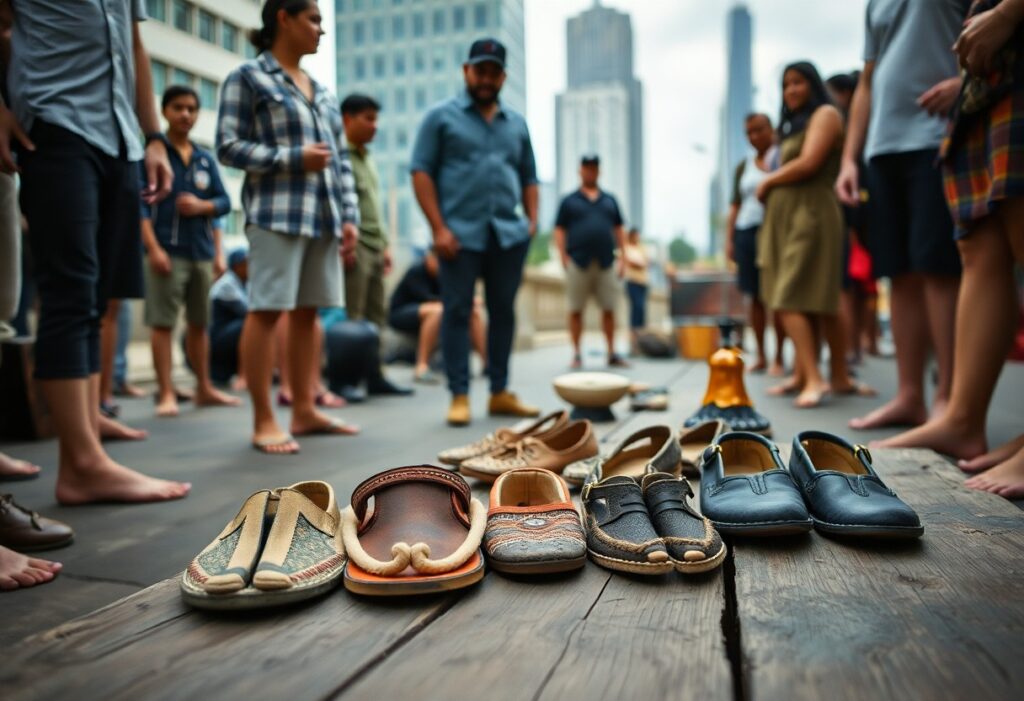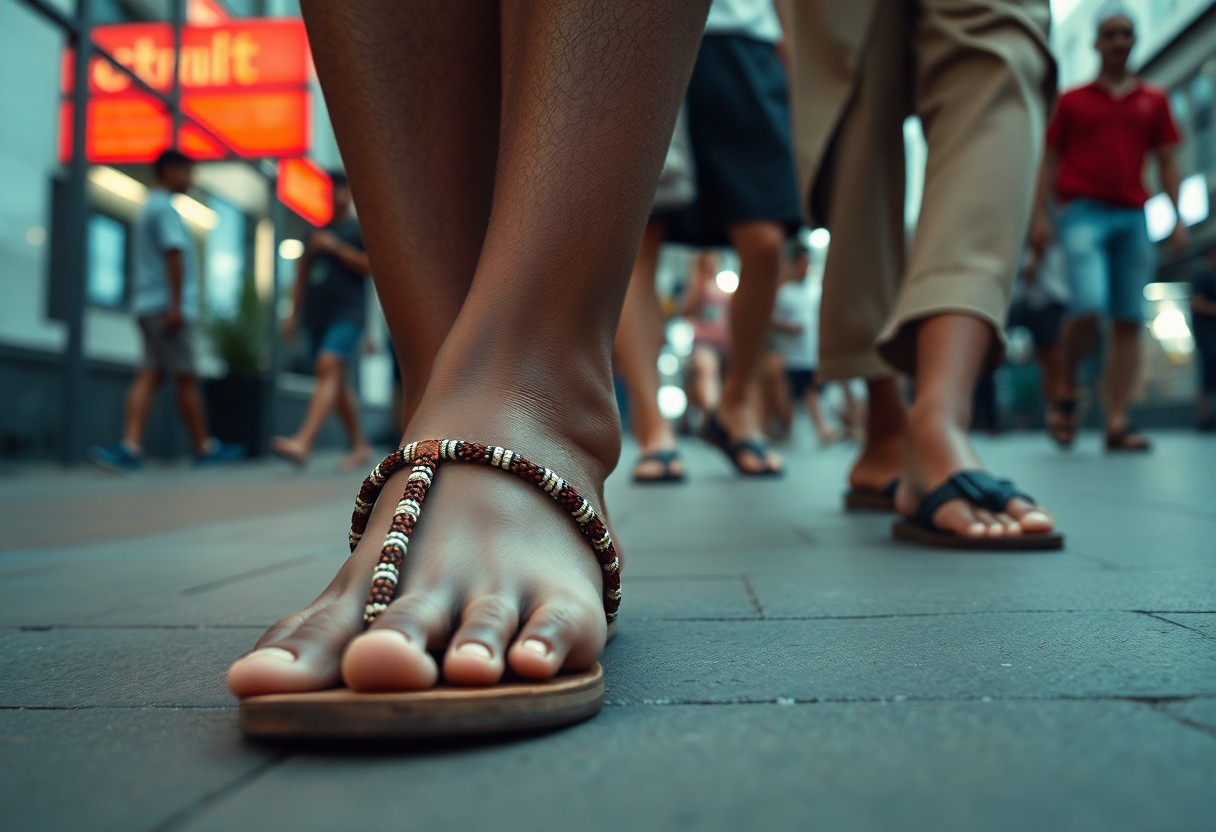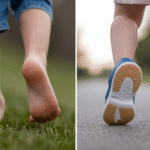
Diving into the realm of barefoot footwear through the perspective of cultural anthropology reveals a tapestry of narratives that intricately link the deep-rooted traditions of Aboriginal cultures to the contemporary urban environment. As you explore this fascinating evolution, you will uncover how cultural beliefs and practices surrounding minimalist footwear not only shape our understanding of comfort but also influence our connection to the earth, as well as avenues for personal expression. Grasping these themes not only enriches your knowledge but also encourages a profound reevaluation of how your choice of footwear can reflect deeper cultural significance and personal identity.

Bridging the Gap Between Ancient Footwear Traditions and Contemporary Innovations
The current landscape of the footwear market is a vibrant tapestry that seamlessly interlaces ancient customs with cutting-edge innovations, fostering a growing appreciation for barefoot footwear. This journey not only pays tribute to traditional indigenous techniques but also adapts them to resonate with your modern lifestyle. By recognising the significance of historical practices, you can uncover a captivating blend of cultural reverence and practical aesthetics in your everyday footwear choices, ultimately enriching your personal style while paying homage to the past.
Contrasting Indigenous Foot Conditioning Techniques with Modern Approaches
Across the globe, indigenous cultures have long employed specific conditioning techniques aimed at strengthening their feet for navigating diverse terrains. Techniques, such as walking barefoot over a variety of surfaces, have fortified the arches and muscles in ways that many contemporary adaptations often fail to replicate. Today, while you may discover minimalist footwear designed to imitate these beneficial effects, they rarely deliver the authentic experience of genuine contact with the earth, which is crucial for developing natural foot strength and flexibility. By understanding these historical practices, you can appreciate the importance of authenticity in fostering a connection to the earth.
The Evolution of Military Footwear: From Ancient Caligae to Contemporary Tactical Boots
The narrative surrounding military footwear is a captivating story of adaptation and innovation, evolving from the resilient Roman caligae, crafted for strength and traction, to today’s tactical boots that harmoniously blend protection with agility and comfort. A close examination of these transformations reveals a steadfast principle: in challenging environments, functionality takes precedence, demanding equipment that enhances endurance and mobility for soldiers.
The Roman caligae epitomised a sophisticated response to military requirements, constructed from durable leather with an open-toe design that provided essential ventilation. This ancient footwear featured thick soles capable of absorbing shock and delivering vital traction, proving crucial in combat scenarios. Fast forward to the present, and tactical boots are now crafted from advanced materials like Kevlar and waterproof membranes to significantly enhance durability and performance. These contemporary designs often incorporate padded collars and state-of-the-art cushioning systems, meticulously engineered to reduce injuries during demanding military activities. By recognising the historical lineage of military footwear, you can appreciate how these traditional styles have paved the way for modern innovations, seamlessly marrying heritage, practicality, and cutting-edge technology to meet the rigorous demands faced by today’s warriors.

Examining the Disparities in Footwear Choices Between Urban and Rural Settings
The distinctions in footwear selections between urban and rural environments illuminate profound cultural and practical differences. Urban settings often prioritise style and brand identity, while rural areas tend to emphasise practicality and durability. As barefoot footwear begins to gain traction, urban dwellers increasingly embrace its minimalist design as both a fashion statement and a pathway to perceived health benefits. Conversely, individuals residing in rural regions may maintain a degree of scepticism, heavily influenced by traditional norms and the practical necessities of their environments.
Current Trends Driving Urban Acceptance of Barefoot Footwear
In urban areas, a noticeable shift towards embracing barefoot footwear is underway, with adoption rates steadily increasing over the past decade. This trend is propelled by a multitude of factors, including a heightened awareness of health issues, an expanding interest in natural movement, and the impact of fitness trends such as yoga and running. Surveys indicate that approximately 35% of urban residents have actively sought out barefoot-style shoes, demonstrating a cultural shift towards embracing innovative body mechanics that promote overall well-being.
Investigating Gender Dynamics in Barefoot Footwear Adoption: Who Takes the Lead?
Gender dynamics play a significant role in the acceptance of barefoot footwear, with varying motivations influencing men’s and women’s choices. Women often face greater societal pressures related to fashion and aesthetics, which may obstruct their willingness to embrace minimalist styles. Conversely, men may be more driven by the performance and health benefits associated with these shoes, resulting in higher adoption rates within male demographics.
A deeper exploration into the gendered aspects of barefoot footwear adoption reveals that societal expectations exert considerable influence over women’s decisions. Women frequently navigate a landscape dominated by ideals of beauty and fashion, often overshadowing practical health benefits. For instance, research suggests that approximately 45% of men in urban settings are inclined to opt for barefoot shoes, compared to only 30% of women. Female consumers often grapple with the balance between form and function, making them more hesitant as they assess the aesthetics of barefoot footwear against their need for comfort and support. By empowering women through targeted awareness campaigns and showcasing stylish barefoot options, the willingness to embrace this trend could increase, potentially reshaping urban footwear narratives and fostering inclusivity across genders.

Groundbreaking Innovations Defining the Future of Barefoot Footwear
As the demand for barefoot footwear continues to surge, revolutionary technologies are set to transform your perspective on comfort and performance. Advances in materials science and personalised fitting techniques will not only enhance functionality but also tailor your walking experience, merging traditional wisdom with modern design principles. You are entering a new era where your footwear can reflect the uniqueness of your journey, leading to unparalleled comfort and performance.
Achieving the Ideal Fit Through 3D Scanning Technology
The emergence of 3D scanning technology is reshaping the customisation of barefoot footwear, allowing for a precise fit that conforms to your unique foot shape. Rather than settling for generic sizes, your shoes can be carefully crafted to align with the contours of your feet, significantly enhancing comfort and reducing the risk of injury. Custom-fit options will not only elevate your walking experience but also make barefoot shoes more accessible to individuals with diverse foot shapes and dimensions, promoting inclusivity.
Embedding Smart Sensors: The Next Frontier in Footwear Technology
The integration of smart sensors into barefoot footwear is poised to redefine the landscape by embedding technology directly into the soles. These innovative features can monitor a plethora of metrics, from distance travelled to foot pressure, providing you with invaluable insights to optimise your walking or running habits. With real-time data at your fingertips, you can adjust your activities to enhance performance and ensure safety.
Imagine having access to real-time analytics while you walk or run. Smart sensors can track your gait, alerting you to any irregularities that may lead to injury. Some pioneering brands are already developing footwear capable of analysing your foot’s impact on various terrains, offering personalised recommendations for style or cushioning adjustments on the fly. This cutting-edge integration merges smart technology with the traditional barefoot philosophy, ensuring that you maintain a natural stride while benefiting from the latest advancements in wearable tech. The potential for enhancing athletic performance, rehabilitation, and everyday comfort is boundless, fundamentally transforming how you engage with your surroundings with every step you take.
Reflecting on the Rich Journey of Barefoot Footwear
Your exploration of the cultural anthropology surrounding barefoot footwear reveals a rich narrative woven from the threads of Aboriginal traditions to contemporary urban practices. By embracing the principles of natural movement and fostering a connection to the earth, you gain insights into how this footwear philosophy transcends mere fashion, profoundly impacting lifestyle choices and community values. As you ponder these diverse perspectives, consider how your footwear selections can embody and promote a deeper understanding of cultural heritage and adaptability in today’s dynamic world.
The Article Cultural Anthropology of Barefoot Footwear: From Aboriginal Traditions to Modern Urban Adoption appeared first on My Shoes Finder
The Article Cultural Anthropology of Barefoot Footwear: Traditions to Today Was Found On https://limitsofstrategy.com







